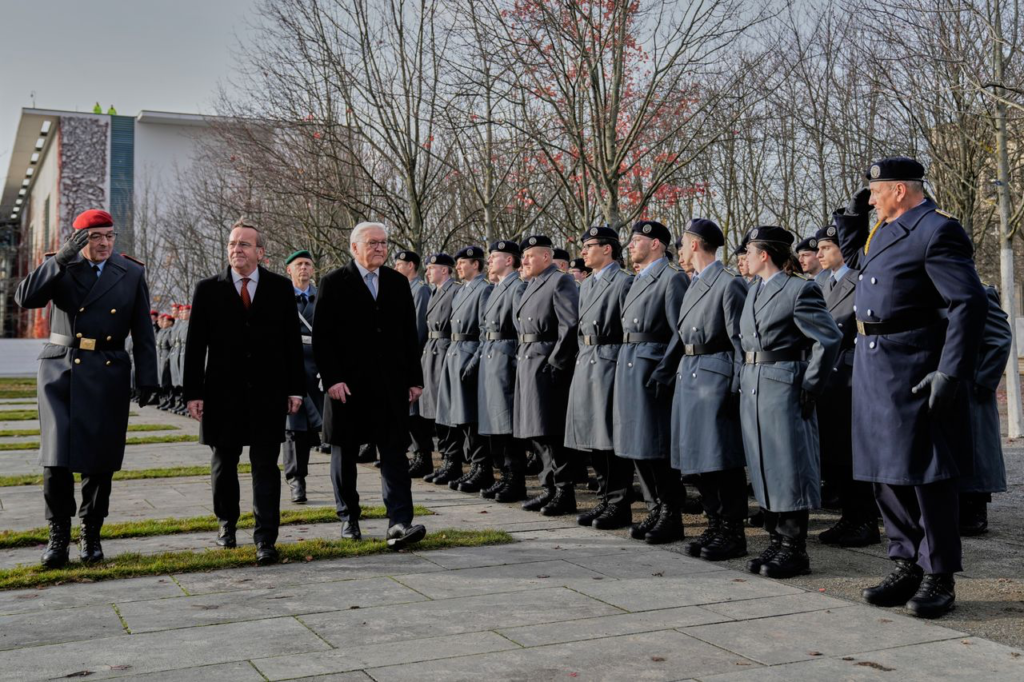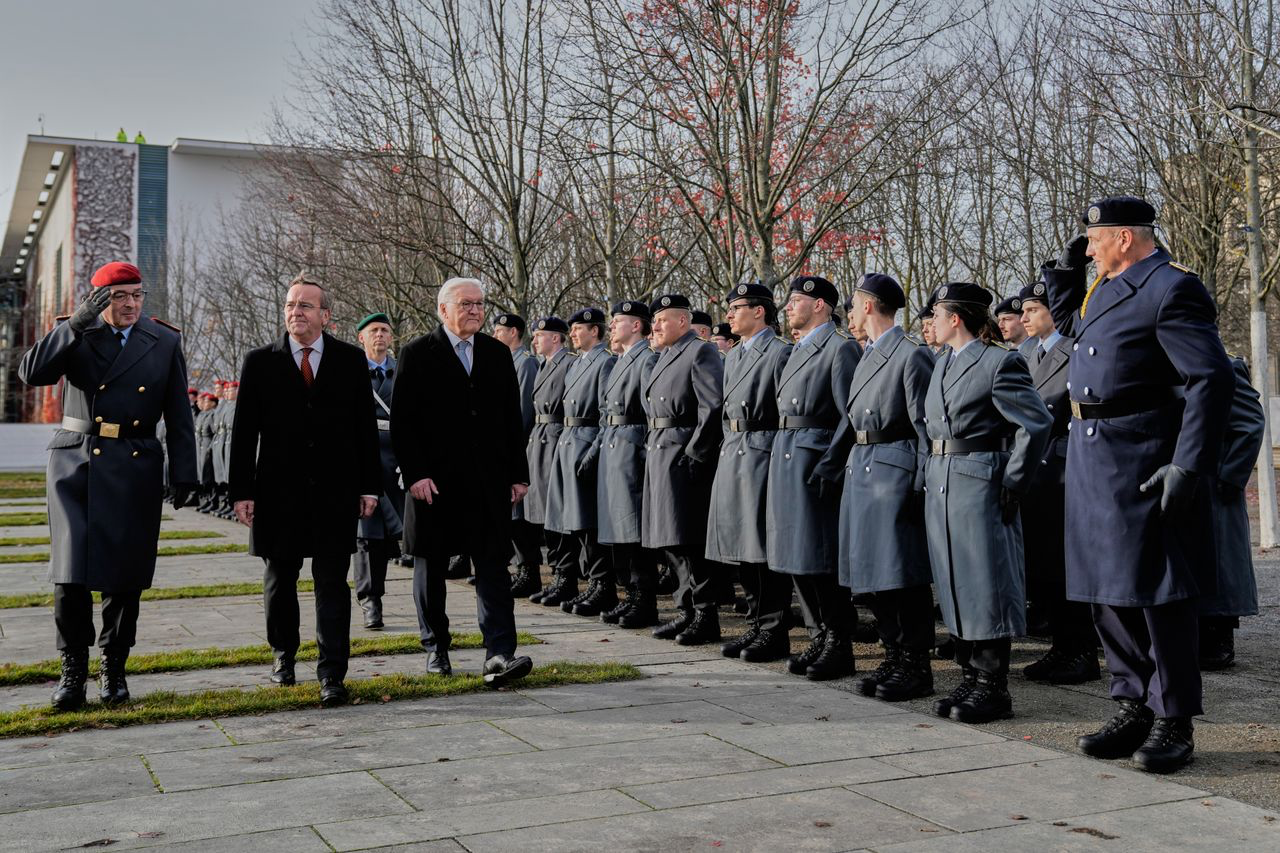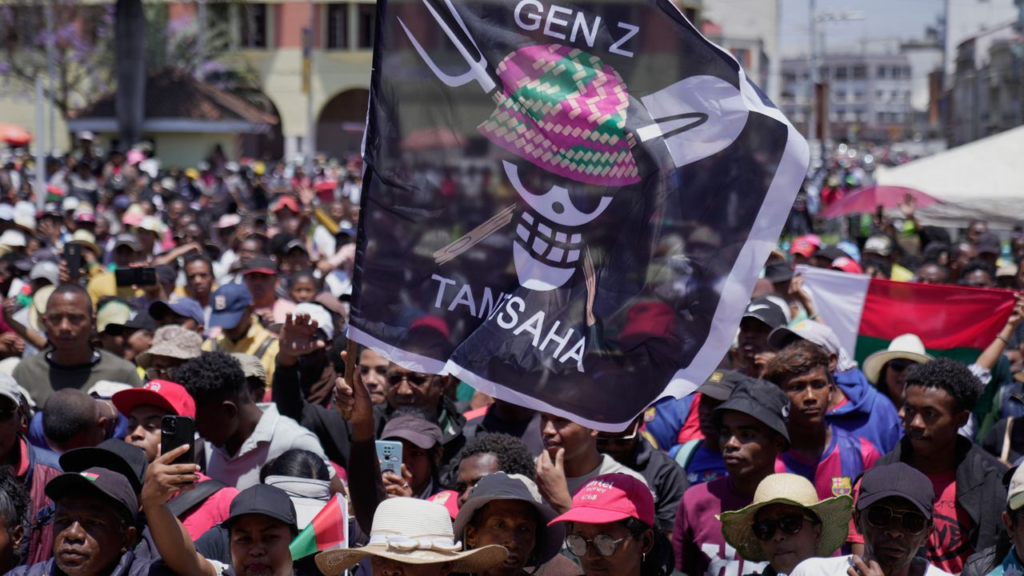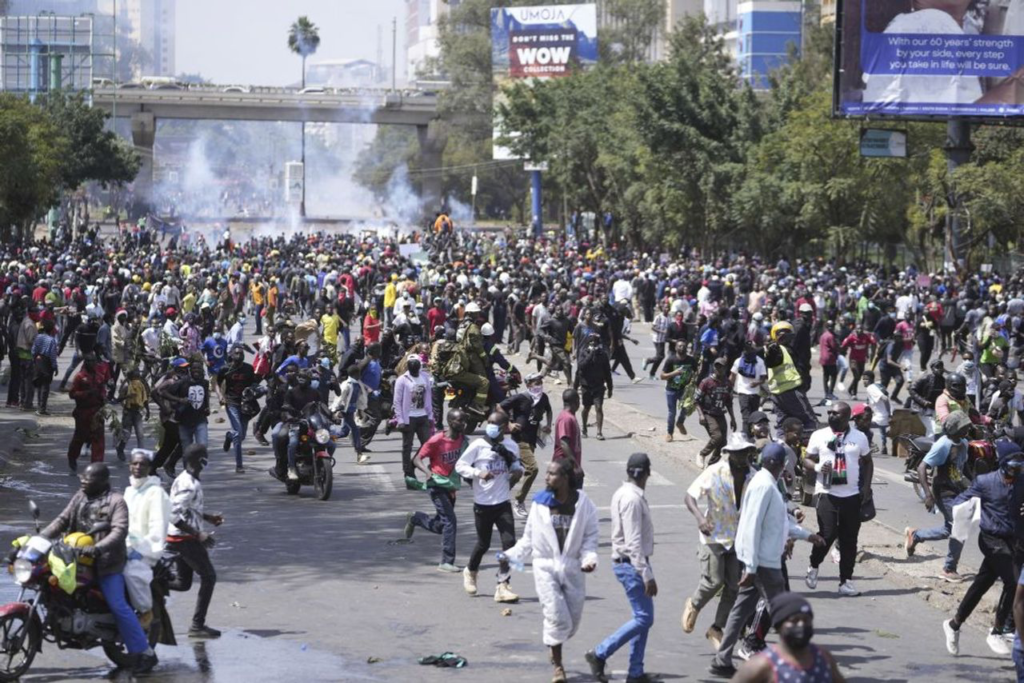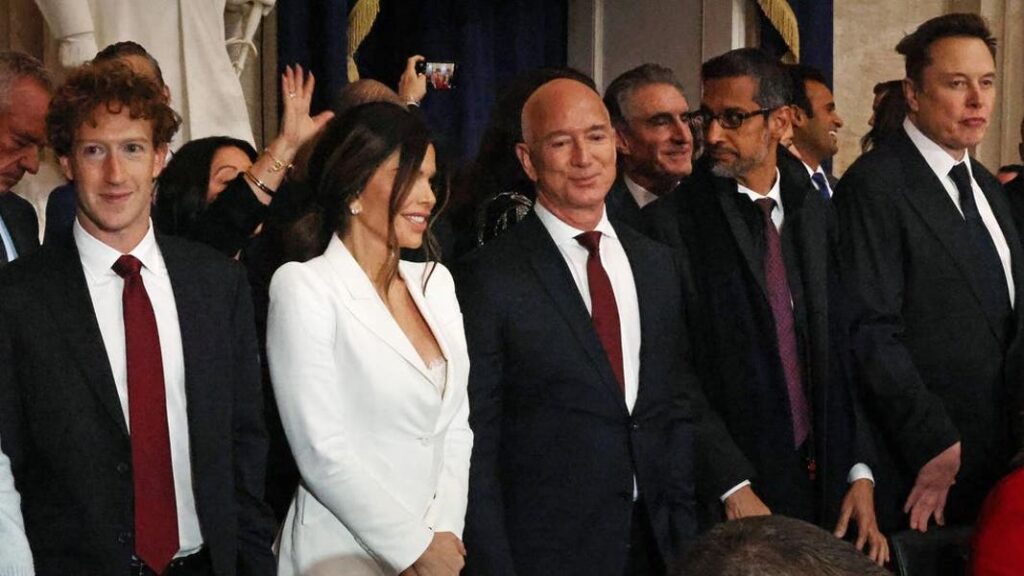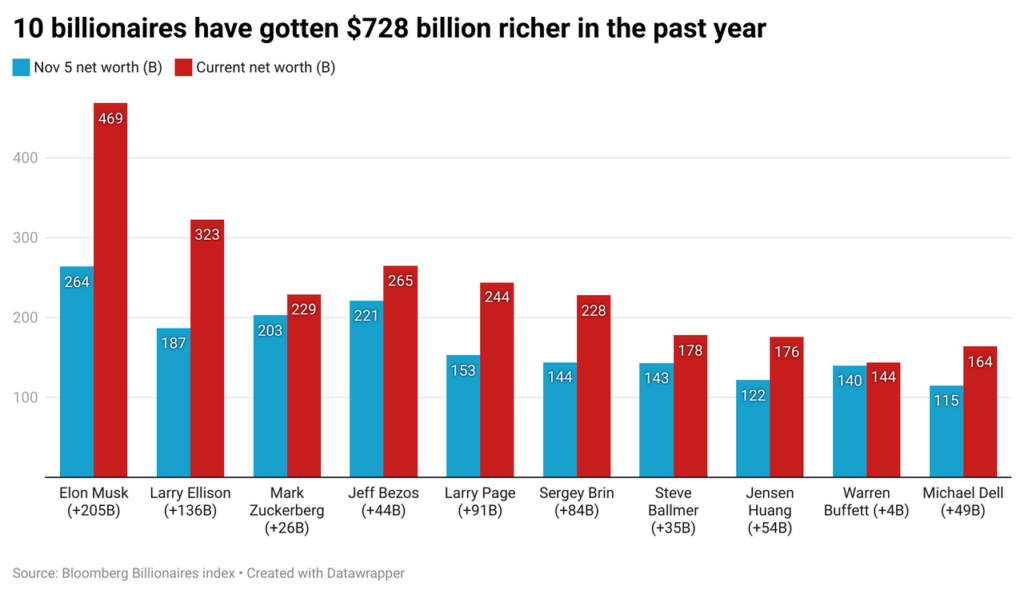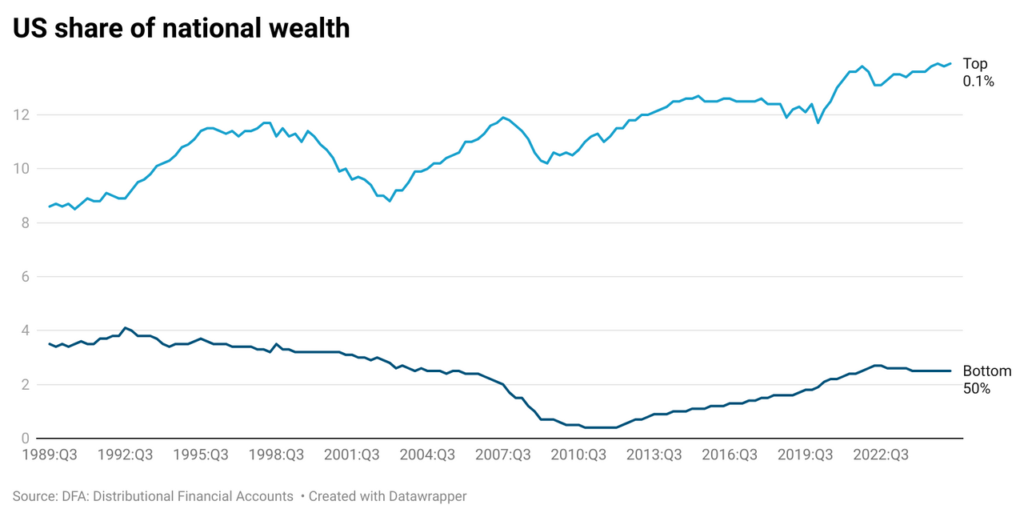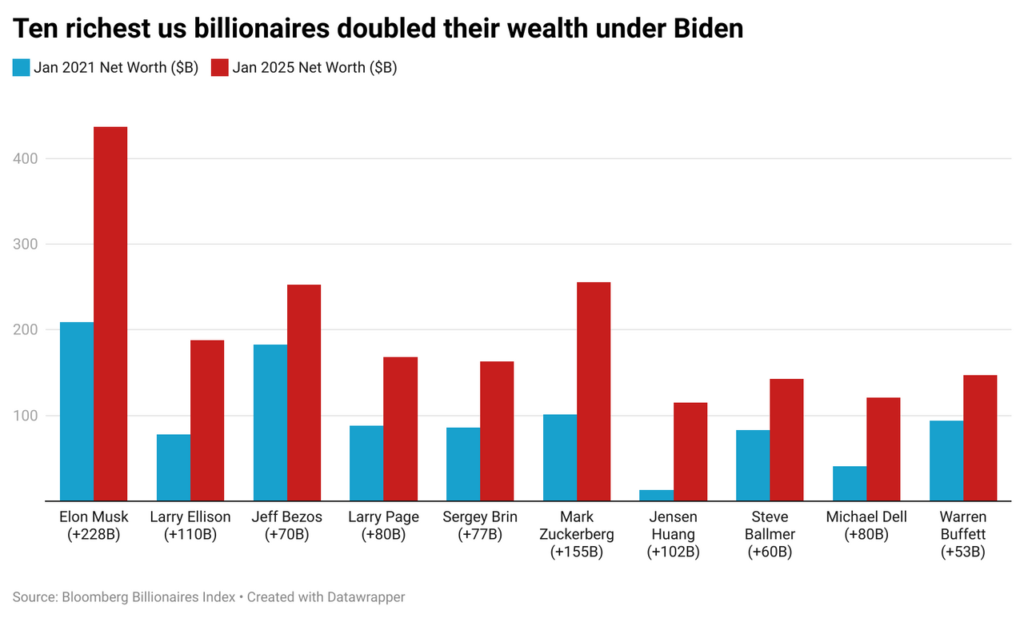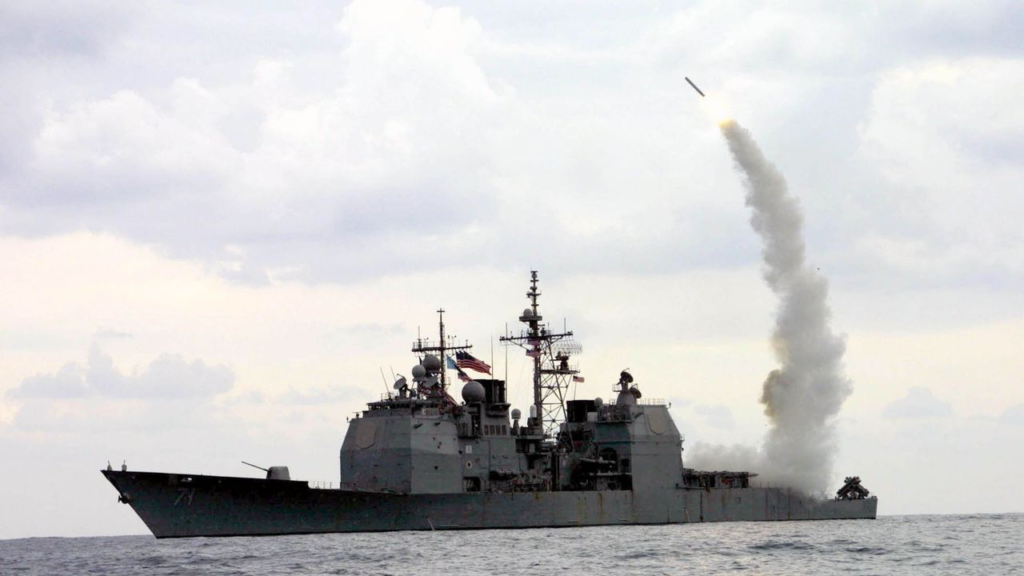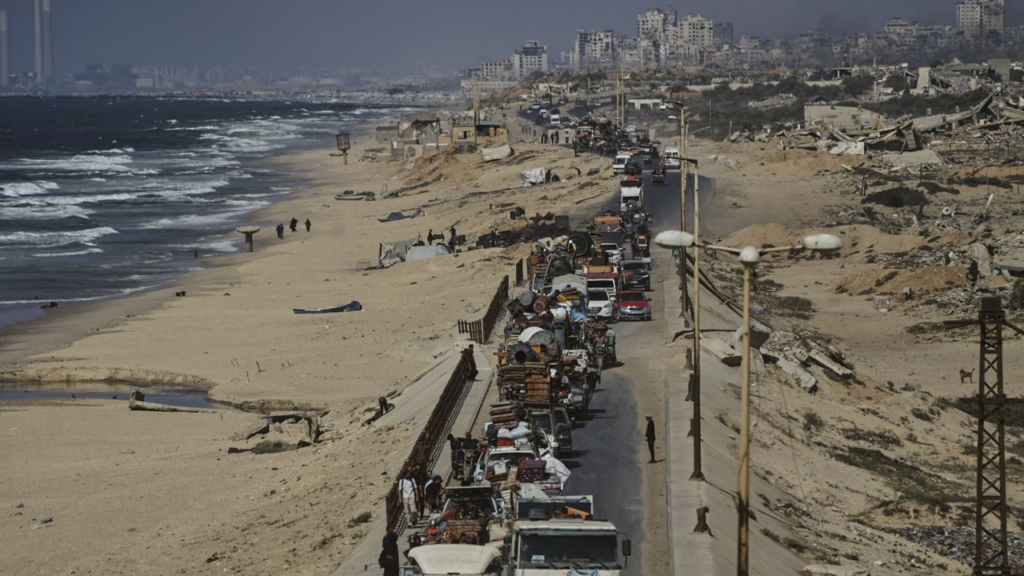ජෙන්-Z නැගිටීම් සහ නායකත්වයේ අර්බුදය: ‘නායකත්වයක් නොමැති’ ව්යාපාර සහ ‘වාම ජනතාවාදයට’ එරෙහිව නොනවතින විප්ලවය – 2 කොටස
පන්ති පදනම් – වෛෂයික අර්බුදය සහ ව්යාජ නායකත්වයන්ගේ පාවාදීම
සංජය ජයසේකර විසිනි.
ජෙන්-Z විරෝධතාවල ගෝලීය රැල්ල, විප්ලවවාදී නායකත්වයේ ගැඹුරු වන අර්බුදය සහ ලියොන් ට්රොට්ස්කිගේ නොනවතින විප්ලව න්යායේ පදනම මත සමාජවාදී ජාත්යන්තරවාදයේ වැඩපිළිවෙල සඳහා සටන් කිරීමේ අවශ්යතාවය විමර්ශනය කරන ලිපි මාලාවක 2 වන කොටසෙහි සිංහල පරිවර්තනය අපි මෙහි පළ කරමු. 2 කොටස ඉංග්රීසි බසින් theSocialist.lk වෙබ් අඩවියේ The Gen-Z Uprisings and the Crisis of Leadership: Permanent Revolution against ‘Leaderless’ movements and ‘Left Populism’ – Part 2 යන සිරසින් 2025 නොවැම්බර් 14 දින පළ කෙරුණි. 1 කොටස 2025 නොවැම්බර් 6 වන දින ඉංග්රීසි බසින්ද, නොවැම්බර් 10 දින සිංහල බසින් ද පළ කරන ලදී.
ප්රධාන වශයෙන් තරුණයින් විසින් මෙහෙයවනු ලබන මෙම නැගිටීම්වලට හේතු වන සමාජ අර්බුදය මුල් බැස ඇත්තේ, කිසිදු පාලන තන්ත්ර වෙනසකට විසඳිය නොහැකි ගෝලීය ධනවාදයේ වෛෂයික ප්රතිවිරෝධතා තුළ ය.
සමාජ අර්බුද
තරුණ විරැකියාව විනාශකාරී මට්ටම් කරා ළඟා වී ඇත: කෙන්යාවේ සියයට 67 ක්, නේපාලයේ සියයට 20 ක් සහ පැරණි යටත් විජිත ලෝකය පුරා ඊට සමාන හෝ ඊටත් වඩා නරක මට්ටම් ආදී වශයෙන්. බංග්ලාදේශයේ, විශ්ව විද්යාල උපාධිධාරීන් පවා අවාමි ලීගයේ දේශපාලන අනුග්රාහක ජාලයන්ට වරප්රසාද ලබා දීම සඳහා යෝජනා කරන ලද, රජයේ තනතුරු සුළු ප්රමාණයකට ඇති ප්රවේශ වීම සීමා කිරීම සඳහා නිර්මාණය කෙරුණු කෝටා ක්රමයකට මුහුණ දුන්හ. මෙම උගත් නමුත් රැකියා විරහිත පරම්පරාව සදාකාලික අස්ථිර අනාගතයකට මුහුණ දෙන අතර, කලෙක ඔවුන්ගේ උපාධි පොරොන්දු වූ මධ්යම පාන්තික පැවැත්ම පවා සුරක්ෂිත කර ගැනීමට නොහැකි ව සිටිති. 2022 මූල්ය වර්ෂය අවසන් වන විට, තරුණ නේපාල ජාතිකයින් 1,700 කට වැඩි පිරිසක් මැද පෙරදිග හෝ අග්නිදිග ආසියාවේ රැකියා සොයමින් දිනපතා රට හැර ගිය බව වාර්තා වන අතර, උපරිම කාලවලදී දිනපතා පිටත්වීම් 2,300 කට වඩා දක්නට ලැබුණි. 2022 නේපාල කම්කරු සංක්රමණ වාර්තාවට අනුව, 2008-09 සහ 2021-22 අතර, නේපාල සංක්රමණික කම්කරුවන් 10,666 ක් විදේශීය ශ්රම ගමනාන්තවල මිය ගියහ.1
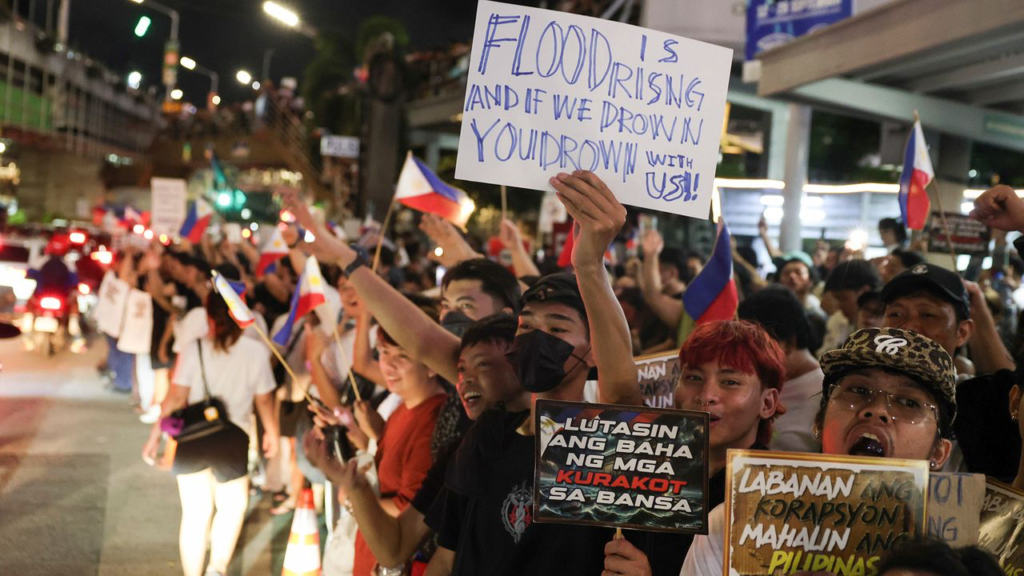
ජීවන වියදම් අර්බුදය, මූලික පැවැත්මම මිලියන සිය ගණනකගේ දෛනික අරගලයක් බවට පත් කර ඇත. COVID-19 වසංගතයෙන් සැපයුම් දාම බාධා, යුක්රේනයේ එක්සත් ජනපද-නේටෝ ප්රොක්සි යුද්ධය සමඟ ඇති වූ ආර්ථික යුද්ධය සහ ජාත්යන්තර මූල්ය ප්රාග්ධනය විසින් නියම කරන ලද කප්පාදු ප්රතිපත්ති හේතුවෙන් ආහාර, ඉන්ධන සහ ඖෂධ මිල ගණන් පුපුරා ගොස් ඇත. ශ්රී ලංකාවේ පවුල් සහල් සහ ඉවුම් පිහුම් ගෑස් සඳහා කිලෝමීටර් දිගු පෝලිම්වල බලා සිටියහ. දේශගුණික විපර්යාසවල ප්රතිඵලයක් සහ ලාභයෙන් උමතු දේපළ වෙළඳාම් සමපේක්ෂනය විසින් යටිතල පහසුකම් නැති විසල් පැල්පත් නගර නිර්මාණය කර ඇති පිලිපීනයේ, ව්යසනකාරී ගංවතුර, වාර්තාගත මාරාන්තික ටයිෆූන් සුළි සුළං කාල වලින් එකක් වන 2025 දී, විශාල සංඛ්යාවක් මරා දැමීය. ගංවතුර සහ එය විසින් ඇති කරන මානව දුක්ඛිත තත්වය මූලික වශයෙන් ධනවාදයේ වරදක් මිස, පාලක කවයන් තුළ නිසැකවම පුලුල්ව පැතිර ඇති දූෂණය නිසා හටගන්නක් නොවේ. දූෂණය යනු ධනවාදයේ සංරචක වන මහා ව්යාපාර, ආණ්ඩු සහ රාජ්ය යාන්ත්රණය අතර සහ-සම්බන්ධතාවයේ නිෂ්පාදනයකි.
මහජනතාව සඳහා මෙම ව්යසනකාරී තත්වයන් පිටුපස සමාජයේ ප්රතිවිරුද්ධ ධ්රැවයේ ධනයේ අශෝභන සංකේන්ද්රණයක් පවතී. මිලියන සිය ගණනක් දරිද්රතාවයට මුහුණ දෙන අතර, බිලියනපතියන්ගේ ධනය 2024 දී පමණක්, දිනකට ඩොලර් බිලියන 5.7 ක අනුපාතයකින්, ඩොලර් ට්රිලියන 2 කින් ඉහළ ගියේ 2023 රේට්ටුවට වඩා තුන් ගුණයකිනි. සෑම සතියකම නව බිලියනපතියන් හතර දෙනෙකු බිහිකරමින් ලෝක බිලියනපතියන්ගේ ඒකාබද්ධ ධනය ඩොලර් ට්රිලියන 15 දක්වා ළඟා විය. එක්සත් ජනපදයේ, ධනවත්ම පුද්ගලයින් දස දෙනා 2020 මාර්තු මාසයේ සිට ඔවුන්ගේ ධනය හය ගුණයකින් වැඩි වූ බවට අත් දුටු අතර, එලොන් මස්ක්ගේ ධනය ඩොලර් බිලියන 33 සිට ඩොලර් බිලියන 469 දක්වා දහහතර ගුනයකින් වැඩිවී පුපුරා ගියේය. මෑතකදී, ඩොලර් ට්රිලියන 1 ක වැටුප් පැකේජයකින් පුම්බනු ලැබූ වූ ඔහුගේ වැටුප, පැයකට ඩොලර් මිලියන 50 ක් හෝ ඔහුගේ ටෙස්ලා කර්මාන්ත ශාලාවක ආරම්භක වැටුප මෙන් තුන් මිලියන ගුණයක් වීය.2 මෙම සමුච්චය අඩු හා මධ්යම ආදායම් ලබන රටවල් ක්රමානුකූල කොල්ලකෑම සමග වෙන් නොකළ හැකි සේ බැඳී ඇත. වඩාත්ම චෝදනාන්විත දෙය නම්, ජෙන්-Z විරෝධතාවල කේන්ද්රස්ථානය වන ඌන සංවර්ධිත රටවලින් ප්රධාන අධිරාජ්යවාදී රටවල සුපිරි ධනවතුන් වෙත ක්රමානුකූලව වටිනාකම් මාරු කිරීමයි: ජාත්යන්තර මූල්ය පද්ධතිය 2023 දී මෙම රටවලින් පැයකට ඩොලර් මිලියන 30 ගණනේ උරා ගත්තේ අධිරාජ්යවාදී මධ්යස්ථානවල ධනවත්ම සියයට 1 වෙතය.3 2024 දී ගෝලීය රාජ්ය ණය ඩොලර් ට්රිලියන 102 ක් වූ අතර, අඩු ආදායම්ලාභී රටවල්–ප්රධාන වශයෙන් අප්රිකාවේ, ආසියාවේ, ලතින් ඇමරිකාවේ සහ කැරිබියන්හි–බැංකු, හෙජ් අරමුදල් සහ වත්කම් කළමනාකරුවන්ට වාර්තාගත ඩොලර් බිලියන 921 ක පොලියක් ගෙවා ඇති අතර, ශුද්ධ වත්කම් පිටතට ගලායාම නව ආදායම් ඩොලර් බිලියන 25 කින් ඉක්මවා ගියේය.4 බිලියන 3.4 ක පමණ ජනතාවක්, සෞඛ්යය හා අධ්යාපනයේ එකතුවට වඩා වැඩි මුදලක් මූල්ය පරපෝෂිතයන්ට පොලී ගෙවීම් සඳහා වියදම් කරන රටවල ජීවත් වන අතර, රටවල් 61 ක් රජයේ ආදායමෙන් අවම වශයෙන් සියයට 10 ක් ණය සේවා සඳහා කැප කරති. නිස්සාරණය කිරීමේ යාන්ත්රණයන් විතැන් වී ඇත: පුද්ගලික ණයහිමියන්–බ්ලැක්රොක් ඩොලර් ට්රිලියන 10 ක්, වෑන්ගාඩ් ඩොලර් ට්රිලියන 8 ක්, ස්ටේට් ස්ට්රීට් ඩොලර් ට්රිලියන 4 ක් කළමනාකරණය කරයි–දැන් අඩු සහ මධ්යම ආදායම් ලබන රටවල බාහිර ණයෙන් සියයට 61 ක් දරා සිටිමින්, 2020-2025 අතර කාලය තුළ සියලුම බාහිර ණය ගෙවීම්වලින් සියයට 39 ක් නිස්සාරණය කර ගත්තේය. දුප්පත් රටවල් සඳහා ණය ගැනීමේ පිරිවැය එක්සත් ජනපදයට වඩා දෙගුණයක් හෝ හතර ගුණයකින් වැඩි ය.5
1992 තරම් ඈත කාලයේ දී ඩේවිඩ් නෝර්ත් නිරීක්ෂණය කළ පරිදි6 “ලෝක බැංකුව, IMF, GATT සහ EC වැනි ලෝක අධිරාජ්යවාදයේ නූතන ආයතන, ලතින් ඇමරිකාව, ආසියාව, අප්රිකාව සහ මැද පෙරදිග යන ස්වාධීන රාජ්යයන් කෙරෙහි නිතිපතා ක්රියාත්මක කරන බලයෙන් කුඩා පංගුවක් වත් එහි ශ්රී විභූතියේ උච්චස්ථානයේ දී වත් බ්රිතාන්ය අධිරාජ්යය සතුව නොතිබුණි.”7මේ අතර, ලෝක බැංකු දත්ත වලට අනුව, දරිද්රතාවයෙන් පෙළෙන පුද්ගලයින්ගේ සංඛ්යාව–ආසන්න වශයෙන් බිලියන 3.5 ක්–1990 සිට යන්තමින් පමනක් වෙනස් වී ඇති අතර, නොනැවතී පවත්නා අසමානතාවය සහිත වත්මන් වර්ධන අනුපාත යටතේ, දරිද්රතාවය අවසන් කිරීමට සියවසකට වැඩි කාලයක් ගතවනු ඇත.8 මෙම දැවැන්ත ධ්රැවීකරණය, ලිබරල් ප්රතිසංස්කරණවාදීන් පවසන පරිදි, ධනවාදය තුළ ආපසු හැරවිය හැකි “ප්රතිපත්ති තෝරාගැනීම් වල” ප්රතිඵලයක් නොවන අතර, එය මාක්ස් වසර 150 කට පෙර හඳුනාගත් ධනවාදී සමුච්චයකරණයේ මූලික නීතිය ප්රකාශ කරයි: “එක් ධ්රැවයක ධනය සමුච්චය වීම, ඒ හා සමඟම, ප්රතිවිරුද්ධ ධ්රැවයේ දුක්ඛිතභාවය, අධික වෙහෙස වීමේ වේදනාව, වහල්භාවය, නොදැනුවත්කම, කෲරත්වය, මානසික පරිහානිය සමුච්චය වීමකි”.9 වටිනාකම් සමාජගතව නිෂ්පාදනය සහ ඒවා පෞද්ගලිකව අත්පත් කර ගැනීම අතර ඇති මෙම සම කළ නොහැකි පරස්පරතාවයෙන් ජෙන්-Z නැගිටීම් පැන නගී. මෙය, මූල්ය කතිපයාධිකාරය අත්පත් කර ගැනීම සහ කම්කරු පාලනය යටතේ ආර්ථික ජීවිතය ප්රතිසංවිධානය කිරීම හරහා පමණක් විසඳිය හැකි පරස්පර විරෝධයකි.
ණය බරෙහි සිරවීම
සඳහන් කළ පරිදි, වත්මන් සමාජ අර්බුද පිටුපස සිටින්නේ, පැරණි යටත් විජිත මත ණයබර හරහා වහල්බවේ බලහත්කාරය පැටවීම සදහා අධිරාජ්යවාදය (මූල්ය ප්රාග්ධනයේ ආධිපත්යය) භාවිතා කරන ප්රධාන මෙවලම වන ජාත්යන්තර මූල්ය අරමුදලයි (IMF). ලෝක බැංකුවේ සහාය ඇතිව, IMF හි ව්යුහාත්මක ගැලපුම් වැඩසටහන් සෑම තැනකින්ම එකම ම්ලේච්ඡ බෙහෙත් වට්ටෝරුව ඉල්ලා සිටී: කම්කරුවන් සහ දුප්පතුන් මත බදු වැඩි කිරීම, අධ්යාපනය සහ සෞඛ්ය සේවා සඳහා වියදම් කපා හැරීම, පොදු දේපළ පෞද්ගලීකරණය කිරීම, විදේශීය සංගතවලට ප්රතිලාභ සැලසීම සඳහා නියාමනය ඉවත් කිරීම සහ මහජනතාව දුප්පත් කරන අතරම මූල්ය ප්රාග්ධනය පොහොසත් කරන මුදල් අවප්රමාණය කිරීම. කෙන්යාවේ 2024 මූල්ය පනත් කෙටුම්පත නව බදු යෝජනා කළ විට, ශ්රී ලංකා රජය විදේශ ණය ගෙවීම පැහැර හරින විට, බංග්ලාදේශ රජය සහනාධාර කපා දැමූ විට, මේවා හුදකලා ජාතික තීරණ නොව වෝල් වීදියේ (Wall Street) සහ IMF හි නියෝග විය.
ජෙන්-Z විරෝධතා ව්යාපාර බිහි වූ රටවලට බලපා ඇති ණය අර්බුදය, පැරණි යටත් විජිත ලෝකයෙන් ක්රමානුකූලව ධනය නිස්සාරණය කිරීමේ IMF හි හස්තය හෙළි කරයි. 2022 දී ණය පැහැර හැරීමෙන් පසුව සහ වික්රමසිංහ සහ දිසානායක යන ජනාධිපතිවරුන් දෙදෙනා යටතේම ජීවන තත්වයන් විනාශකාරී ලෙස පහත හෙලූ IMF නිර්දේශිත ප්රතිව්යුහගත කිරීම් ක්රියාත්මක කිරීමෙන් පසුව, 2024 දී රාජ්ය ණය-දළ දේශීය නිෂ්පාදිතයට අනුපාතය සියයට 96.1 ක් වූ සහ එය 2025 අවසන් වන විට සියයට 102 ක් වනු ඇතැයි පුරෝකථනය කර ඇති ශ්රී ලංකාව, ප්රපාතය මුව විට සිටී.10 කෙන්යාවේ රාජ්ය ණය බර 2025 ජුනි වන විට දළ දේශීය නිෂ්පාදිතයෙන් සියයට 67.8 ක් (ඩොලර් බිලියන 91.3) දක්වා ළඟා වී,11 සංවර්ධනය වෙමින් පවතින රටවල් සඳහා IMF හි සාමාන්යය වන සියයට 50 සීමාව සැලකිය යුතු ලෙස ඉක්මවා ගියේ ය.12 2024 මුදල් පනත් යෝජනාවට එරෙහි විරෝධතාවලට සෘජුවම හේතු වූ 2024 මැයි වන විට ආදායමෙන් සියයට 67.1ක් ණය සේවාකරණය සඳහා වැයවූ13 දැවැන්ත බරක් මෙයින් නියෝජනය වෙයි. බංග්ලාදේශයේ දළ දේශීය නිෂ්පාදිතයෙන් සියයට 31.6-32.2 ක සාපේක්ෂව අඩු රජයේ ණය අනුපාතය (2023-2024)14, 2024 නැගිටීමට හේතු වූ ව්යුහාත්මක ගැලපුම් (structural adjustments) පීඩනයන් ආවරණය කරයි. යටිතල පහසුකම් වියදම් සහ සීමිත ආදායම් බලමුලු ගැන්වීම හේතුවෙන් අඛණ්ඩ වැඩිවීමක් පෙන්නුම් කරන ප්රක්ෂේපණ සමඟ, නේපාලයේ ණය, 2024 දී දළ දේශීය නිෂ්පාදිතයෙන් සියයට 47.87 ක් විය.15
2024 දෙසැම්බර් මාසයේදී රජයේ ණය නාමික දළ දේශීය නිෂ්පාදිතයෙන් සියයට 60.7 දක්වා ළඟා වීමත්16, 2025 පළමු කාර්තුවේදී පොලී ගෙවීම් දළ දේශීය නිෂ්පාදිතයෙන් සියයට 6 දක්වා ඉහළ යාමත් සමඟ17, ඊනියා “නැගී එන ආර්ථිකයන්” තුළ පවා ණය ගැතිකමේ වහල් භාවය ක්රියාත්මක වන ආකාරයට පිලිපීනය නිදසුන් සපයයි. 2024 වන විට පේරු රාජ්යය දළ දේශීය නිෂ්පාදිතයෙන් සියයට 32.7-32.8 ක අඩු ණය අනුපාතයක් පවත්වා ගත්තද18, ආර්ථික හැකිලීම නොතකා මූල්ය සම්පිණ්ඩණය (fiscal consolidation) කිරීම සඳහා කෙරෙන IMF පීඩනයට මුහුණ දෙයි. මැඩගස්කරයේ ණය බර 2025 දී දළ දේශීය නිෂ්පාදිතයෙන් සියයට 51.27 ක් වනු ඇතැයි ඇස්තමේන්තු කර ඇති අතර 2028 වන විට එය සියයට 54.64 ක් වනු ඇතැයි පුරෝකථනය කර ඇත. එහි රාජ්ය ණයෙන් සියයට 70 කට ආසන්න ප්රමාණයක් බාහිර ණය වන අතර නිල ණයහිමියන් විසින් දරනු ලැබේ.19 මොරොක්කෝවේ ණය වසංගතයේ උච්චතම අවස්ථාව වූ කොවිඩ් වසංගතය මධ්යයේ ණය අනුපාතය දළ දේශීය නිෂ්පාදිතයෙන් සියයට 71.5 සිට 2024 වන විට සියයට 67.7-70 දක්වා අඩු කෙරුනේ ජීවන තත්වයන් මිරිකා ඇති ආක්රමණශීලී මූල්ය සම්පිණ්ඩනය හරහාය.20
2024 දී ටැන්සානියාව, කැමරූන් සහ නයිජීරියාව යන අප්රිකානු රාජ්යයන්හි ණය අනුපාත දළ දේශීය නිෂ්පාදිතයෙන් පිළිවෙලින් සියයට 41.8, සියයට 39.6 සහ සියයට 41.3 ක් පෙන්නුම් කරයි.21 මෙම සංඛ්යාලේඛන, අප්රිකාවේ මධ්යන්ය (median) රාජ්ය ණය දළ දේශීය නිෂ්පාදිතයෙන් සියයට 65 ක් වන බවත්, අප්රිකානු රටවල් 25 ක් අතිරික්ත ණය බරින් යුක්ත ව හෝ උග්ර ණය අර්බුදයකට මුහුණ දී සිටින බවත්, රටවල් 60 කට වැඩි ප්රමාණයක් රජ්ය ආදායමෙන් සියයට 10 කට වඩා වැඩි ප්රමාණයක් පොලී ගෙවීම් සඳහා පමණක් වියදම් කරන බවට වන යථාර්ථය වසන් කරයි.22 වඩාත් තීරණාත්මක ලෙස, අප්රිකානු ණය සංයුතිය නාටකාකාර ලෙස වෙනස් වී වාණිජ ණය 2000 දී පැවති සියයට 20 සිට දැන් මුළු ණයෙන් සියයට 43 ක් දක්වා ඉහළ ගොස් ඇති අතර, ප්රධාන අනුපාත කළමනාකරණය කළ හැකි සේ පෙනී ගියද, ණය සේවා පිරිවැය පුපුරා ගොස් ඇති බව එයින් අදහස් වේ.23 මෙම ණය සැකැස්ම–ශ්රී ලංකාවේ සහ කෙන්යාවේ මෙන් ඉසිලිය නොහැකි බර හෝ උප-සහාරා අප්රිකාවේ “මධ්යස්ථ” මට්ටම් වේවා–තනි කර්තව්යයක් ඉටු කරයි: ණය සේවාකරණය රජයේ ආදායමෙන් විශාල කොටසක් ගිල ගනිද්දී, කප්පාදුව, පුද්ගලිකකරණය, සමාජ සේවා වැඩසටහන් විනාශ කිරීමට බලකර සිටින IMF ව්යුහාත්මක ගැලපුම් වැඩසටහන් හරහා බලාත්මක කරනු ලබන අධිරාජ්යවාදයේ මූල්ය නියෝගයන්ට ජාතික ආර්ථිකයන් යටත් කිරීමය.
පන්ති සංයුතිය
ජෙන්-Z ව්යාපාරවල පන්ති සංයුතිය, ඒවායේ විප්ලවීය විභවය මෙන්ම ඒවායේ පාවාදීමේ යාන්ත්රණය යන දෙකම හෙළි කරයි. විශ්ව විද්යාල සිසුන් සහ රැකියා විරහිත තරුණයින් ආරම්භක ගිනි පුපුර සහ බොහෝ විට වඩාත්ම සටන්කාමී කණ්ඩායම සම්පාදනය කරයි. ඔවුන්ගේ ශක්තිය, ධෛර්යය සහ රාජ්ය ප්රචණ්ඩත්වයට මුහුණ දීමට ඇති සූදානම ප්රතික්ෂේප කළ නොහැකිය. බංග්ලාදේශයේ, සිසුන් හමුදා ඛණ්ඩ වලට මුහුණ දුන් අතර, විරෝධතාකරුවන් එක් දහස් පන්සියයකට ආසන්න සංඛ්යාවක් මරා දැමූ රජයේ කුරිරු ප්රහාරවලට මුහුණ දුන්හ; කෙන්යාවේදී තරුණයින් පාර්ලිමේන්තුවට කඩා වැදුණි; නේපාලයේ විරෝධතාකරුවන් රජයේ ගොඩනැගිලි වලට ගිනි තැබූහ. එහෙත් ප්රධාන වශයෙන් මධ්යම පාන්තික පසුබිම්වලින් ඇදී ආ මෙම ශිෂ්ය පෙරමුණු බලයන්ට, මූලික සමාජ පරිවර්තනය සඳහා ස්වාධීන දේශපාලන නායකත්වයක් සැපයිය නොහැක.
තීරණාත්මක සමාජ බලවේගය වන්නේ කම්කරු පන්තියම වන අතර, මෙම ව්යාපාරවලට ඔවුන්ගේ සහභාගී වීම එහි සැඟවී ඇති බලය පෙන්නුම් කරයි. ශ්රී ලංකාවේ, එක්දින මහා වැඩවර්ජන දෙකක් විරෝධතා දක්වන තරුණයින් සමඟ කම්කරු සහයෝගීතාවය පෙන්නුම් කළ අතර, 2022 මැයි 9 වන දින ආණ්ඩුවේ අනුග්රහය ලත් මැරයන් අරගලකරුවන්ට පහර දෙන විට කම්කරුවෝ ඔවුන්ගේ ආරක්ෂාව සඳහා කොළඹ ප්රධාන විරෝධතා ස්ථානයට වහා දිව ගියහ. කෙන්යාවේ දී, ආරම්භක ජෙන්-Z විරෝධතාවලින් පසුව වැඩ වර්ජන රැලි, එකක් පසුපස එකක් ලෙස පුපුරා ගියේය: ගුරුවරුන්, සිවිල් සේවකයින්, සෞඛ්ය සේවකයින්, ගුවන්තොටුපළ කාර්ය මණ්ඩල, විශ්ව විද්යාල කථිකාචාර්යවරු ආදී සියල්ලෝම, අඩු වැටුප්, අස්ථිර තත්වයන් සහ පෞද්ගලීකරණයට විරෝධය පළ කළහ. කුරිරු සූරාකෑම යටතේ ඩොලර් බිලියන ගණනක අපනයන නිෂ්පාදනය කරන බංග්ලාදේශයේ ඇඟලුම් කම්කරුවන්, ඔවුන්ගේ වෘත්තීය සමිති ඔවුන් බලමුලු ගැනීමට එරෙහිව කටයුතු කරන අතරතුර පවා විරෝධතාවලට සහභාගී වූහ.
සමිති ද්රෝහිකම
එහෙත්, මෙම නැගිටීම් සමාජවාදය සඳහා සවිඥානික විප්ලවවාදී ව්යාපාරයක් බවට කම්කරු පන්තිය විසින් පරිවර්තනය කිරීම ක්රමානුකූලව වලක්වනු ලැබිණි. මෙම පාවාදීමේ තීරනාත්මක යාන්ත්රණය වූයේ කම්කරු ව්යාපාරය තුළ ධනේශ්වර පර්යාය සඳහා පොලිස් බලකායන් ලෙස ක්රියාත්මක වන වෘත්තීය සමිති නිලධරයන් සහ ව්යාජ-වාම සංවිධානවල භූමිකාවයි.
කෙන්යාවේ, වෘත්තීය සමිති මධ්යම සංවිධානය (the Central Organization of Trade Unions- COTU), කෙන්යාවේ ජාතික ගුරු සංගමය (Kenya National Union of Teachers – KNUT) සහ කෙන්යාවේ පශ්චාත් ප්රාථමික අධ්යාපන ගුරුවරුන්ගේ සංගමය (Kenya Union of Post-Primary Education Teachers- KUPPET) යන වෘත්තීය සමිති සම්මේලන සියල්ලම ජෙන්-Z නැගිටීමෙන් පසුව ඇති වූ වැඩ වර්ජන හුදකලා කිරීමට සහ පරාජය කිරීමට කටයුතු කළහ.24වැටුප් වැඩිවීම් ඉල්ලා සහ කප්පාදුවට විරුද්ධ වෙමින් ගුරුවරුන් වැඩවර්ජන දියත් කළ විට, KNUT සහ KUPPET නායකයින් රූටෝ රජය සමඟ පාවාදීමේ ගිවිසුම් සාකච්ඡා කළ අතර, පුද්ගලීකරනය සහ සේවා කොන්දේසි වටා ඇති ඉල්ලීම් අතහැර දමමින් අවම වැටුප් වැඩිවීම් පිළිගත්තේය. මෙම වෘත්තීය සමිති නිලධරයෝම IMF විසින් නියම කරන ලද කප්පාදුවේ මුළු කාලය පුරාම තම වරප්රසාදිත නිලයන් පවත්වා ගෙන ගිය අතර, ඔවුන්ගේ කාර්යය වන්නේ කම්කරුවන් නියෝජනය කිරීම නොව ප්රාග්ධනයට පිළිගත හැකි සීමාවන් තුළ ඔවුන්ගේ අරගල පාලනය කිරීම බව හෙළි කළහ.
ශ්රී ලංකාවේ වෘත්තීය සමිති වඩා සෘජු ප්රතිවිප්ලවවාදී කාර්යභාරයක් ඉටු කළහ. රාජපක්ෂගේ ඉල්ලා අස්වීම ඉල්ලා 2022 වූ නැගිටීම අතරතුර, ඔවුන් අප්රේල් 28 සහ මැයි 6 යන දිනවල සීමිත එක්දින මහා වැඩවර්ජන දෙකක් කැඳවූ අතර, එය හුදෙක් මහජන විරෝධතාවලට ප්රතිචාරයක් ලෙස සහ කම්කරු නිලධරය කෙරෙහි සේවක අතෘප්තිය පාලනය කිරීම සඳහා අරමුණු විය. නමුත් මිලියන සංඛ්යාත කම්කරුවන්ට තම ශක්තිය පෙන්වීමට ඉඩ දුන් වෘත්තීය සමිති නායකයින් පසුව මෙම බලය ධනවාදයට එරෙහි ස්වාධීන දේශපාලන අභියෝගයක් බවට ඒකාබද්ධ වීම වැළැක්වීමට වියරු ලෙස කටයුතු කළහ. ඔවුන් තවදුරටත් වැඩ වර්ජන කැඳවීම ප්රතික්ෂේප කළ අතර, වෘත්තීය සමිති පාලනයෙන් ස්වාධීන ක්රියාකාරී කමිටු පිහිටුවීමට විරුද්ධ වෙමින්, ධනේශ්වර පාර්ලිමේන්තු විපක්ෂය වන සමගි ජන බලවේගය (SJB) සහ ජනතා විමුක්ති පෙරමුණ (JVP) විසින් ප්රවර්ධනය කරන ලද සහ FSP විසින් සහාය දක්වන ලද, ධනේශ්වර පාලනය ස්ථාවර කරන “අන්තර්කාලීන රජයක්” සඳහා වන ඉල්ලීම් දෙසට ව්යාපාරය යොමු කළහ. සෞඛ්ය සේවකයින් සටන්කාමී වැඩවර්ජන දියත් කළ විට,25 වෘත්තීය සමිති ඔවුන් යටපත් කිරීමට රජය සමඟ කටයුතු කළහ.
බිලියන ගණනක අපනයන නිපදවන ඇඟලුම් කම්කරුවන් දැවැන්ත නිර්ධන පංති බලවේගයක් වන බංග්ලාදේශයේ, කම්කරුවන් බලමුළුගැන්වීම මැඩ පැවැත්වීමට වෘත්තීය සමිති සම්මේලන සෘජුව සහයෝගී වූහ.26 හසීනා රජයට එරෙහි විරෝධතාවලට දස දහස් ගණනක් ඇඟලුම් කම්කරුවන් එක් වූ විට පවා, ඔවුන්ගේ වෘත්තීය සමිති, කර්මාන්තශාලා වාඩිලාගැනීම්, මහා වැඩවර්ජන හෝ කුමන හෝ ස්වාධීන කම්කරු පන්ති දේශපාලන මැදිහත්වීමක් වැළැක්වීමට කටයුතු කළහ. හසීනාගේ ඇද වැටීමෙන් පසු, ඇඟලුම් කම්කරුවන් වැටුප් වැඩිවීම් සහ වඩා හොඳ කොන්දේසි ඉල්ලා සිටි විට, වෘත්තීය සමිති කර්මාන්තශාලා තුළ “නිසි පාලනය” ක්රියාත්මක කිරීම සඳහා මිලිටරි පිටුබලය ලත් යූනුස් තන්ත්රය සමඟ සහයෝගයෙන් කටයුතු කළහ.27
මෙම රටාව වෘත්තීය සමිති නිලධරයේ පන්ති ස්වභාවය පිළිබිඹු කරයි. මෙම නිලධාරීන් සාමාන්ය සේවකයින්ට වඩා බොහෝ ඉහළ වැටුප්, වරප්රසාද සහ තනතුරු භුක්ති විඳිති.28 ඔවුන් කම්කරු අමාත්යාංශ, ත්රෛපාර්ශ්වික කොමිෂන් සභා (වෘත්තීය සමිති-සමාගම්-රජය) සහ සංස්ථාවාදී ව්යුහයන් හරහා ධනේශ්වර රාජ්ය යාන්ත්රණයට ඒකාබද්ධ කෙරී ඇත.29 ඔවුන්ගේ ද්රව්යමය අවශ්යතා පවතින්නේ ඔවුන් නාමිකව නියෝජනය කරන කම්කරු පන්තිය සමඟ නොව,30 ඔවුන්ට ඔවුන්ගේ වරප්රසාදිත ස්ථානය ලබා දෙන පද්ධතිය ආරක්ෂා කිරීමත් සමඟය31.
ලෝක සමාජවාදී වෙබ් අඩවියේ විශ්ලේෂණය නිශ්චිත ය: “මෙම ආර්ථික හා දේශපාලන පදනම්–මූල්ය ආයෝජන සහ ධනේශ්වර රාජ්යයෙන් ලැබෙන සෘජු සහනාධාර–මත රැඳී සිටින්නේ නිල වෘත්තීය සමිතිවල නිලධරය සමන්විත වන ඉතා වරප්රසාද ලත් සුලු ධනේශ්වර ස්ථරයකි. මෙම දූෂිත ආයතනයට අදාළව ‘කම්කරු සංවිධානය’ වැනි අර්ථකථන කැඳවීම සේවය කරන්නේ එහි සැබෑ සමාජ ස්වභාවය සහ එය සහ කම්කරු පන්තිය අතර ගැඹුරින් පවතින පන්ති ප්රතිවිරෝධතා සැඟවීමට පමණි.”32
ප්රතිගාමී වම
වෘත්තීය සමිති නිලධරයට අමතරව, මෙම පාවාදීම සඳහා දේශපාලන ආවරණයක් සැපයීමේ කාර්යය කරන ප්රතිගාමී වාම සංවිධාන ජාලයක් ක්රියාත්මක වේ. මෙම කණ්ඩායම්–ස්ටැලින්වාදී, මාඕවාදී, විවිධ හිටපු ට්රොට්ස්කිවාදී භ්රෂ්ටයින් සහ ව්යාජ වාම ප්රවණතා33–සැබෑ විප්ලවවාදී කම්කරු පන්ති නායකත්වයේ මතුවීම ක්රමානුකූලව අවහිර කරමින් රැඩිකල් විකල්ප ලෙස පෙනී සිටිති.
කෙන්යාවේ, විප්ලවවාදී සමාජවාදී සංගමය (Revolutionary Socialist League-RSL) සහ කොමියුනිස්ට් පක්ෂය මාක්ස්වාදී-කෙන්යාව (Communist Party Marxist-Kenya-CPM-K) රැඩිකල්කරණය වූ ජෙන්-Z නැගිටීම මැඩපැවැත්වීම සඳහා තීරණාත්මක කාර්යභාරයක් ඉටු කළහ.34 RSL, විප්ලවීය වාචාල කතා භාවිතා කරමින්, කම්කරු පන්තියේ ස්වාධීන දේශපාලන මැදිහත්වීමම වළක්වන, ව්යාපාරයේ, “නායකත්වයක් නැති”, “බැනර් නැති”, “දේශපාලනයක් නැති” යන ස්වභාවය ප්රවර්ධනය කළේය. ධනේශ්වරයට ප්රතිලාභ ලබා දුන් දේශපාලන ව්යාකූලත්වයට වාම ආවරණයක් ලබා දෙමින්, RSL හි නායකයෙකු වන එස්රා ඔටියේනෝ පැවසුවේ “… රජය ක්රියාකාරීව නායකයින් සොයමින් සිටින බැවින්, දැනට නායකයින් මතු නොවීමට මෙය හොඳ උපක්රමයකි. […] RSL ලෙස, අපි එහි යන්නේ අරමුණක් ඇතිවය, මන්ද අපි ජනතාව සමඟ සහයෝගීතාවයෙන් සිටිය යුතුය–ඔවුන් පවසන දේට අපි සම්පූර්ණයෙන්ම එකඟ වෙමු. එබැවින් අපි වීදිවලට යමු, අපි අපගේ ජනතාව සංවිධානය කිරීමට උත්සාහ කරමු. එක්වන විට, අපි බැනර් රැගෙන නොයන්නෙමු, මන්ද මිනිසුන් කිසිවක් නොමැතිව, අවට සැරිසැරීමට යන බැවිනි.”35
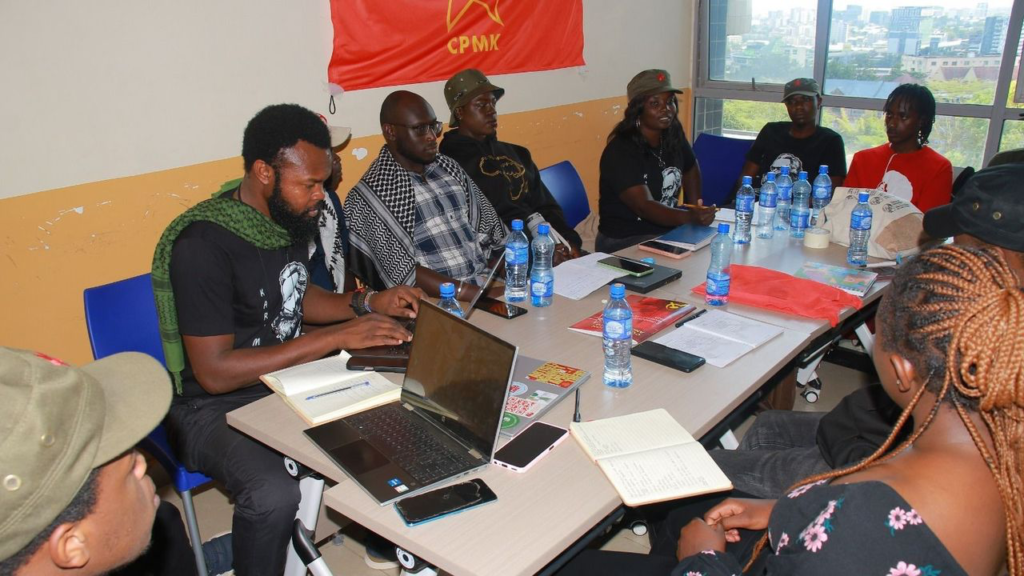
CPM-K පක්ෂයේ මූලික දේශපාලන දිශානතිය කේන්ද්රගත වන්නේ, එහි පූර්වගාමියා වූ CPK විසින් කෙටුම්පත් කිරීමට උපකාරී වූ 2010 කෙන්යාවේ ආණ්ඩුක්රම ව්යවස්ථාව ආරක්ෂා කිරීම කෙරෙහි ය. ඒ අතරම, එහි “ප්රගතිශීලී වගන්ති” ක්රියාත්මක කිරීම කෙසේ හෝ ‘නොවැළැක්විය හැකි ලෙස’ සමාජවාදයට මඟ පාදනු ඇතැයි යන ප්රතිසංස්කරණවාදී මිත්යාව එය ප්රවර්ධනය කරයි.36 2007 පශ්චාත් මැතිවරණ ප්රචණ්ඩත්වයෙන් පසු ධනේශ්වර පාලනය ස්ථාවර කිරීම සඳහා පාලක පන්තිය විසින් බ්රිතාන්යයෙන් සහ එක්සත් ජනපදයෙන් ලැබුණු විශාල අරමුදල් සමඟ මෙම ව්යවස්ථාව කෙටුම්පත් කරන ලදී. මෙම ධනේශ්වර නීති රාමුව ආරක්ෂා කිරීම සඳහා මහජන කෝපය යොමු කිරීමෙන්, CPM-K, අරගලය ධනවාදය තුළ සීමා වී ඇති බවට සහතික කරයි.
පිලිපීනයේ, ව්යාජ-වාම පාවාදීමේ රටාව එහි වඩාත්ම පැහැදිලි සහ දේශපාලනිකව උපදේශාත්මක ස්වරූපයට ළඟා වේ. ස්ටැලින්වාදී ඡත්ර (umbrella) සංවිධානයක් වන BAYAN (1985 දී ආරම්භ කරන ලදී) සහ 1990 ගණන්වල පිලිපීනයේ ස්ටැලින්වාදී කොමියුනිස්ට් පක්ෂයේ (CPP) කොටසක් සහ විවිධ සමාජ ප්රජාතන්ත්රවාදී සංවිධාන ඒකාබද්ධ වීමෙන් මතු වූ ව්යාජ-වාම අක්බයාන් පක්ෂය (Citizens’ Action Party-පුරවැසි ක්රියාකාරී පක්ෂය)37— ඓතිහාසික වශයෙන් සුළු ධනේශ්වර දේශපාලනයේ විවිධ ගමන් පථ නියෝජනය කරන ප්රතිවාදීන් වුවද38—“චීනයට සතුරු පිලිපීන ධනේශ්වරයේ කොටස් කෙරෙහි ඔවුන්ගේ පොදු දිශානතිය තුළින් එකිනෙකා සමඟ වඩාත් සමීප පෙළගැස්වීමකට පැමිණෙමින් සිටිති”39. 2025 සැප්තැම්බර් 21 වන දින මැනිලා නුවරදී 100,000 ක ජනතාවක් පෙළ ගැසුණු විට–ෆර්ඩිනන්ඩ් මාකෝස් (ජ්යෙෂ්ඨයා) යුද නීතිය ප්රකාශ කිරීමේ 53 වන වසර–මෙම සංවිධාන දෙක වෙනම දූෂණ විරෝධී පෙළපාලි මෙහෙයවූ අතර, ඒවා WSWS සඳහන් කළ පරිදි, ඔවුන්ගේ දේශපාලන ස්වභාවය අනුව “පැහැදිලි ලෙසම මධ්යම පාන්තික” ඒවා විය. කෙසේ වෙතත්, සැලකිය යුතු ලෙස, වීදිවලට රැස් වූ ජනතාව “විරෝධතා වෙත ආකර්ෂණය වූයේ ධනේශ්වරයේ විශේෂිත කන්ඩායමක් වෙත නැඹුරු වීම නිසා නොවීය”. ඊට වෙනස්ව, බයාන් සහ අක්බයාන් යන දෙකම ධනේශ්වර පක්ෂ සමඟ විවෘතව සහයෝගයෙන් කටයුතු කළ අතර, ස්වාධීන කම්කරු පන්ති ව්යාපාරයක් මතුවීම වැළැක්වීම සඳහා ක්රමානුකූලව කටයුතු කළේ, මාකෝස් සහ ඩුටර්ටේ කඳවුරු අතර ධනේශ්වර කන්ඩායම් යුද්ධයේ ආවෘත අන්තයට මහජන කෝපය දිශානත කිරීමෙනි. “සමහර මාකෝස් විරෝධී සටන් පාඨ සහ බැනර් තිබියදීත්”, මෙම පෙලපාලිවල අවසාන දිශානතිය වූයේ “චීනයෙන් වැඩි ආර්ථික ආයෝජන ලබා ගැනීම සඳහා එක්සත් ජනපදය සමඟ පිලිපීන සබඳතා මධ්යස්ථ කිරීමට උත්සාහ කරන” ඩුටර්ටේගේ බලකායන්ට එරෙහි සන්ධානයක් දෙසට” වේ.

බයාන් සහ අක්බයාන්ගේ ද්රෝහී භූමිකාව තේරුම් ගත යුත්තේ අපගමනයක් ලෙස නොව පන්ති සහයෝගීතාවය කෙරෙහි ඔවුන්ගේ මූලික දේශපාලන දිශානතියේ තාර්කික ප්රතිඵලයක් ලෙස ය. බයාන්, මාඕවාදී චීන කොමියුනිස්ට් පක්ෂයේ ‘පෙරමුණු’ සංවිධාන (front organizations) වලින් එකක් වන අතර,40 සමාජවාදී විප්ලවය නිරන්තරයෙන් කල් දමන දීර්ඝ “ජාතික ප්රජාතන්ත්රවාදී” අරගලයක තුල, කම්කරු පන්තිය උපකල්පිත “ප්රගතිශීලී ජාතික ධනේශ්වරයකට” යටත් කරන “අවධි දෙකේ න්යාය” දශක ගණනාවක් තිස්සේ ප්රවර්ධනය කර ඇත.41 “සමාජ ප්රජාතන්ත්රවාදී” විකල්පයක් ලෙස තමන්ව හඳුන්වා ගන්නා අක්බයාන්, කොංග්රසයේ අසුන් දරමින් සහ අධිරාජ්යවාදී-ගැති ධනේශ්වර දේශපාලනඥයින්ට සහාය දක්වමින් ධනේශ්වර පාර්ලිමේන්තු දේශපාලනයට සම්පූර්ණයෙන්ම ඒකාබද්ධ වී ඇත. එහි ජාතිකවාදී, අවස්ථාවාදී සහ පන්ති සහයෝගීතා දේශපාලනය යනු CCP හි ස්ටැලින්වාදී දේශපාලනයේ අඛණ්ඩ පැවැත්මයි.42 නැවත වරක්, මෙම බලවේග පොදු කාර්යයක් තුළ එක්සත් වේ: එනම්, පිලිපීන කම්කරු පන්තියේ ස්වාධීන දේශපාලන බලමුලු ගැන්වීම අවහිර කිරීම සහ ඉන්දු-පැසිෆික් කලාපයේ වොෂින්ටනයේ උපායමාර්ගික අරමුණු සමඟ පෙලගැසී සිටින ධනේශ්වර කන්ඩායම්වලට එය යටත් කිරීමයි. ඔවුන්ගේ වර්ධනය වන පෙළගැස්ම පිළිබිඹු කරන්නේ පුද්ගලික සංහිඳියාවක් නොව අධිරාජ්යවාදී යුද්ධයේ යුගයේ දී ඔවුන්ගේ සුලු ධනේශ්වර දේශපාලනයේ නොවැළැක්විය හැකි තර්කනයයි. පිලිපීනය “චීනය සමඟ යුද්ධය සඳහා වොෂින්ටනයේ සූදානමේ පෙරමුණු වල” ස්ථානගත වී ඇති හෙයින්, ඔවුන් ඉඳහිට කරන උපායශීලී අරමුණු සඳහා යෙදවිය හැකි අධිරාජ්ය විරෝධී වාචාල කතා කුමක් වුවත්, බයාන් සහ අක්බයාන් යන දෙකම අධිරාජ්යවාදයේ යුද න්යාය පත්රයට මහජන විරෝධය ඒකාබද්ධ කිරීම සඳහා උපකරණ බවට ඵලදායී ලෙස පත්ව ඇත.43
දූෂණ විරෝධී ව්යාපාරය
බයාන් සහ අක්බයාන් පක්ෂ දෙකම විසින් ප්රවර්ධනය කරන ලද දූෂණ විරෝධී රාමුව, ස්ටැලින්වාදය සියවසක් පුරා ගෝලීය වශයෙන් ප්රචාරය කළ පන්ති-සහයෝගීතා දේශපාලනය සඳහා සමකාලීන වෙස්වළා ගැනීමක් නියෝජනය කරයි. එහිදී, ස්ටාලින්ගේ “අවධි දෙකේ න්යාය” විවෘතව “ප්රගතිශීලී ජාතික ධනේශ්වරය” ඇතුළු “පන්ති හතරක එකතුවක්” ඉල්ලා සිටි අතර, අද දින ව්යාජ වාමාංශිකයෝ44 “ප්රජාතන්ත්රවාදී කාර්යයන් සම්පූර්ණ කිරීමේ” කොටසක් ලෙස, “දූෂිත ප්රභූන්ට” එරෙහිව “ජනතාවගේ” එක්සත්කම සඳහා උද්ඝෝෂනය කරති. සූත්ර දෙකම ධනේශ්වරය ප්රගතිශීලී සහ ප්රතිගාමී කඳවුරුවලට බෙදා, කම්කරු පන්තිය ධනේශ්වර කන්ඩායමකට යටත් කර, සමාජවාදී විප්ලවය සඳහා වන සටන ක්රමානුකූලව අවහිර කරයි. WSWS පැහැදිලි කළේ, “දූෂණ විරෝධී ව්යාපාරයක ධජය දේශපාලනිකව ආවෘත අන්තයකි. එය දේශපාලනිකව අරූපික වන අතර අන්ත දක්ෂිනාංශික පක්ෂ ඇතුළු පුළුල් පරාසයක ධනේශ්වර සහ සුලු ධනේශ්වර පක්ෂ සහ සංවිධාන එක වහලක් යටට ගෙන ඒම සඳහා සේවය කළ හැකිය.”45 පිලිපීනයේ දී, මෙය ඩුටර්ටේ කඳවුරට එරෙහි ධනේශ්වර විමර්ශනවලට සහාය දැක්වීමේ හා මාකෝස් ආණ්ඩුවේ එක්සත් ජනපද මිලිටරි ව්යුහයන් හා ඒකාබද්ධ වීම සමඟ පෙළ ගැසීමේ සංයුක්ත ස්වරූපයක් ගනී. මෙහි මූලෝපායික ක්රියාකාරිත්වය පැහැදිලි ය: පාලක පන්ති කණ්ඩායම් එකිනෙකාට එරෙහිව දූෂණ චෝදනා ආයුධයක් බවට පත් කර ගනී–මාකෝස් ඩුටර්ටේගේ ප්රහාර පූර්ව භංග කිරීම සඳහා පරීක්ෂණ දියත් කරයි, ඩුටර්ටේගේ බල කල්ලි මාකෝස්ගේ සහචරයින් හෙළිදරව් කිරීම සඳහා සෙනෙට් සභාව භාවිතා කරයි- බයාන් සහ අක්බයාන් මූලික වශයෙන් ධනේශ්වර පාලක ප්රභූව තුළ තනතුරු නැවත සකස් කිරීමක් (reshuffle) වන දෙයට ව්යාජ-රැඩිකල් ආවරණයක් සපයයි. විනාශකාරී විරැකියාව, දේශගුණික විපත්, පහත වැටෙන වැටුප් සහ චීනයට එරෙහි එක්සත් ජනපද යුද්ධයකදී වෙඩි උණ්ඩ ලෙස භාවිතා කිරීමේ අන්තරායට මුහුණ දෙන කම්කරු පන්තිය, මේ හරහා ස්වාධීනව සංවිධානය වීමෙන් සහ තමන්ගේම පන්ති අවශ්යතා ඉදිරියට ගෙන යාමෙන් වලක්වනු ලැබේ.
පිලිපීන විරෝධතා පිළිබඳ මෙම විශ්ලේෂණය විශ්වීය වශයෙන් අදාළ වේ. ඇත්ත වශයෙන්ම, ශ්රී ලංකාවේ දී ජවිපෙ/එන්පීපී, IMF හි කප්පාදු වැඩසටහන ක්රියාත්මක කරන්නේ, දූෂණ විරෝධී වේදිකාවක පදනම මත, සියලු සාම්ප්රදායික ධනේශ්වර පක්ෂ කෙරෙහි ඇති අතිමහත් මහජන සතුරුකම ගසාකමින් බලයට පැමිණීමෙනි. නේපාලයේ මිලිටරිය විසින් ස්ථාපනය කරන ලද තාක්ෂණික (technocratic) රජය දූෂණයට එරෙහිව සටන් කිරීමේ පොරොන්දු හරහා තමන්ව සාධාරණීකරණය කළේය. බංග්ලාදේශයේ බැංකුකරු යූනුස් දූෂිත දේශපාලන සංස්ථාපිතයට වඩා ඉහළින් තමන් ස්ථානගත වන බවට දැක්වූයේය.
නමුත් දූෂණය යනු පද්ධතියට ව්යතිරේකයක් නොව ඒකාධිකාරී ධනවාදයේ දේපළ සබඳතාවල ආවේණික ලක්ෂණයකි. නිෂ්පාදන මාධ්යයන්හි පෞද්ගලික අයිතිය නිලධාරීන්ට තමන් පොහොසත් කර ගැනීම සඳහා ද්රව්යමය කොන්දේසි නිර්මාණය කරයි. ධනේශ්වර රාජ්යය නිශ්චිතවම පවතින්නේ ධනේශ්වර පන්තියේ අවශ්යතා ආරක්ෂා කිරීම සඳහා වන අතර, IMF විසින් යෝජනා කරන “පිරිසිදු ධනවාදය”, පදවල පරස්පර විරෝධීතාවයක් බවට පත් කරයි. අනෙකුත් සියලුම ප්රජාතන්ත්රවාදී කාර්යයන් මෙන්ම, නිලධර දූෂණයට එරෙහිව පොදු වත්කම් ආරක්ෂා කිරීම කම්කරු පන්තිය මත රඳා පවතින්නේ, මූල්ය වංශාධිපතිත්වය සහ ධනේශ්වර කතිපයාධිකාරය අත්පත් කර ගැනීම සහ රාජ්යයම අහෝසි කිරීමේ විප්ලවීය ක්රියාවෙහි කොටසක් ලෙස ය.
පාලන තන්ත්ර මාරුව අධිරාජ්යවාදයට සේවය කරයි
ජෙන්-Z විරෝධතා රැල්ල රටවල් කිහිපයක පාලන තන්ත්ර මාරු කිරීම සඳහා සමත් වූ අතර, බලයේ සිටින ධනේශ්වරයේ නියෝජිතයින් කණ්ඩායමක් තවත් කණ්ඩායමකින් ප්රතිස්ථාපනය කරණු ලැබිණි. නොඉවසිය හැකි තත්වයන් කෙරෙහි සැබෑ කෝපයෙන් උපන් මහජන නැගිටීම්, දූෂණ විරෝධී රාමු හරහා එකම හෝ ඊටත් වඩා නරක ප්රතිපත්ති ක්රියාත්මක කරන “පිරිසිදු” පරිපාලකයින්ට සහාය වීම සඳහා යොමු කෙරේ. බටහිර සම්බන්ධතා ඇති බංග්ලාදේශයේ යූනුස් “ශක්තිමත් ආර්ථික ප්රතිසංස්කරණ” පොරොන්දු වේ. කෙන්යාවේ රූටෝ-ඔඩින්ගා සන්ධානය රට එක්සත් ජනපදයේ “ප්රධාන නේටෝ නොවන සගයෙකු” ලෙස නම් කරමින් කප්පාදුව දිගටම කරගෙන යයි.
ශ්රී ලංකාවේ වික්රමසිංහ IMF ඉල්ලීම් ක්රියාත්මක කිරීම සඳහා පොලිස්-රාජ්ය මර්දනය භාවිතා කළ අතර, ඔහුගේ අනුප්රාප්තික ජනාධිපති අනුර දිසානායකගේ ආණ්ඩුව, IMF නියෝග අඛණ්ඩව හා අකුරටම ක්රියාත්මක කිරීමට එරෙහි පන්ති අරගල මැඩ පැවැත්වීම සහ මර්දනය කිරීම සඳහා මුළු රාජ්ය යාන්ත්රණය, පාර්ලිමේන්තුව, මාධ්යය, රැවටීම් හා වාචාල කතා සහ එහි වෘත්තීය සමිති නිලධරය යන සමස්තයම භාවිතා කරමින් සිටී. නේපාලයේ තාක්ෂණධරයින් දේශපාලනයට ඉහළින් ස්ථානගත වෙමින් ධනේශ්වර දේපළ සබඳතා ආරක්ෂා කරති.
ව්යාජ-වම සහ වෘත්තීය සමිති නිලධරයන් විසින් කරන මෙම පාවාදීමේ සම්පූර්ණ බර කම්කරු පන්තිය සහ ග්රාමීය ජනතාව විසින් දරනු ලැබේ. නව පාලන තන්ත්රයන් කප්පාදු වැඩසටහන් පවත්වාගෙන යන අතර නව දේශපාලන බැනර් යටතේ – “ප්රගතිශීලී” සන්ධාන, “දූෂණ විරෝධී” ආණ්ඩු හෝ මිලිටරි පිටුබලය ලත් තාක්ෂණවේදීන් – අධිරාජ්යවාදී අවශ්යතා සඳහා සේවය කරමින් ධනේශ්වර දේපළ සබඳතා නොවෙනස්ව ආරක්ෂා කරයි. රාජ්ය ප්රචණ්ඩත්වයට මුහුණ දෙමින් තම ජීවිත පරදුවට තැබූ කම්කරුවෝ දැන් “ආර්ථික ස්ථාවරත්වය” සාක්ෂාත් කර ගැනීම සඳහා “පටි තද කිරීම” සහ “මූල්ය විනය” ආදී ඔවුන් වීදිවලට තල්ලු කළ වාචල කතා වලම අලුත් වටයකට මුහුණ දෙති. ආණ්ඩු පෙරලා දැමූ විප්ලවවාදී ශක්තිය වෙහෙසට හා අධෛර්යයට පත්වන්නේ ව්යාජ-වාමාංශිකයන් මහජන කෝපය එක් ධනේශ්වර කන්ඩායමකින් තවත් ධනේශ්වර කන්ඩායමකට සහාය දැක්වීමට යොමු කරවන විටය. මෙම දේශපාලන අවමංගත වීම දක්ෂිණාංශික සහ ෆැසිස්ට් බලවේග විසින් මහජන කලකිරීම ගසාකෑමට සාරවත් කොන්දේසි නිර්මාණය කරයි. ධනේශ්වර සූරාකෑම සහ අධිරාජ්යවාදී ආධිපත්යයට අත නොතබන අතරතුර, ජනාන්දෝලකයෝ (Demagogues-ජනතාව අතර ඇති අගතීන් ගසා කන වාචාල/වාගාලංකාරී දේශපාලකයෝ) කම්කරු පන්තියේ හා පීඩිත මධ්යම පන්තියේ කොටස්වල සාධාරණ කෝපය සංක්රමණිකයන්, වාර්ගික සුළුතරයන්, “දූෂිත දේශපාලනඥයන්” හෝ “දූෂිත රාජ්ය නිලධාරීන්” හා “මත් වසංගතය” හෝ පාතාලය ආදී බිල්ලන් වෙත යොමු කරති. පාර්ලිමේන්තුව සහ මැතිවරණ, ධනේශ්වරය තම පාලනය නැවත තහවුරු කර ගන්නා තීරණාත්මක යාන්ත්රණයන් ලෙස ක්රියා කරන අතර, මහජන විරෝධය සුරක්ෂිත ව්යවස්ථාමය රාමු තුළට යොමු කරමින් කම්කරු පන්තිය ධනේශ්වරයේ කන්ඩායමික යුද්ධයට යටත් කරයි.
ඉතාලියේ (1920-22)46, ජර්මනියේ (1933)47 සහ ප්රංශයේ (1936-39)48 ඓතිහාසික අත්දැකීම්, පාවා දුන් විප්ලවවාදී ව්යාපාර ඒවායේ ප්රතිවිරුද්ධය බවට පරිවර්තනය කළ හැකි ආකාරය ඛේදජනක පැහැදිලිකමකින් පෙන්නුම් කරයි. මේ සෑම අවස්ථාවකදීම, සමාජ ප්රජාතන්ත්රවාදයේ සහ ස්ටැලින්වාදයේ දේශපාලන පාවාදීම්–කම්කරු බලය සඳහා සටන් කිරීම ප්රතික්ෂේප කිරීම, මහජන පෙරමුණු හරහා කම්කරු පන්තිය “ප්රජාතන්ත්රවාදී” ධනේශ්වරයට යටත් කිරීම, ස්වාධීන කම්කරු පන්ති දේශපාලන සංවිධානගත වීම මර්දනය කිරීම–මහ ජනතාව අකර්මණ්ය කොට අධෛර්යමත් කළ අතර, ෆැසිස්ට්වාදයේ ම්ලේච්ඡ ස්ථාවර වීම සඳහා මාවත හෙළි කළේය. මෙම ව්යසනයන් විශ්ලේෂණය කිරීමේදී ට්රොට්ස්කි අවධාරණය කළ පරිදි, “ෆැසිස්ට්වාදය යනු ධනේශ්වර සමාජය තුළ නිර්ධන පන්ති ප්රජාතන්ත්රවාදයේ සියලු අංග මුලිනුපුටා දැමීම මත පදනම් වූ විශේෂිත ආණ්ඩු ක්රමයකි”; එය කළ හැකි වූයේ විප්ලවවාදී නායකත්වයේ පූර්ව පාවාදීම මගින් පමණි.49 සමකාලීන ජෙන්-Z නැගිටීම්වල ද එම අපෝහකය ක්රියාත්මක වේ: ව්යාජ-වාම සංවිධාන ක්රමානුකූලව සමාජවාදී නායකත්වය යටතේ ස්වාධීනව කම්කරු පන්තිය බලමුලු ගැන්වීම වළක්වන්නේ, පාර්ලිමේන්තු යාන්ත්රණයන් සහ අවශ්ය විටෙක ඒකාධිපති ග්රහනය යන දෙකම හරහා ධනේශ්වර ප්රතිගාමීත්වය නැවත තහවුරු කර ගැනීමට අවශ්ය කොන්දේසි නිර්මානය කරමිනි.
මෙම ප්රතිඵල දැඩි අනතුරු ඇඟවීමකි: ධනවාදයේ රාමුව තුළ පාලන තන්ත්ර වෙනසක් කම්කරු පන්තියට උපායමාර්ගික ආවෘත අන්තයක් නියෝජනය කරයි. ජෙන්-Zනැගිටීම්වල මූලික පාඩම නම්, මහජන ව්යාපාරවලට ආණ්ඩු පෙරලා දැමිය හැකි බව—පෙන්වා ඇති පරිදි ඔවුන්ට එය කළ හැකිය—හෝ ධනේශ්වර ක්රමය පෙරලා නොදැමීමෙන් එකම සූරාකෑමේ ව්යුහය තුළ පිරිස් මාරු කිරීමක් පමණක් ඇති කරන බව නොවේ: පාඩම නම්, සමාජවාදී ජාත්යන්තරවාදී වැඩසටහනක් වටා තරුණයින්, දුප්පතුන් සහ පීඩිත මධ්යම පන්තිය පෙළගැස්විය හැකි ස්වාධීන විප්ලවවාදී කම්කරු නායකත්වයක් නොමැතිකම මහජන අරගල මාරාන්තික පාවාදීම් කරා ගෙන යන බවයි.කම්කරුවන් සහ තරුණයින් මුහුණ දෙන කාර්යය වන්නේ පාර්ලිමේන්තුවේ හෝ ජනාධිපති මන්දිරයේ දොරටු අසල ඔවුන්ගේ අරගලය නතර කිරීම නොව, ධනේශ්වර පන්තියේ දේපල අත්පත් කර ගැනීම සහ කම්කරු බලය ස්ථාපිත කිරීම දක්වා එය ඉදිරියට ගෙන යාමයි. ග්රාමීය ජනතාව සහ පීඩිත මධ්යම පන්තිය එහි නායකත්වය යටතේ සංවිධානය කරමින් කම්කරු පන්තිය විසින් දේශපාලන බලය අත්පත් කර ගැනීමෙන් පමණක්, සූරාකෑම, මහා විරැකියාව, දේශගුණික ව්යසනය සහ අධිරාජ්යවාදී යුද්ධය සඳහා වගකිව යුතු පද්ධතිය ආරක්ෂා කරන ආවෘත අන්තයන් ජය ගත හැකිය.
මතු සම්බන්ධයි…
- Yearender 2022: More Nepalis leave for foreign jobs in 2022, https://kathmandupost.com/money/2022/12/29/more-nepalis-leave-for-foreign-jobs-in-2022 ↩︎
- WSWS, “Elon Musk’s $1 trillion payout and the case for expropriation” (8 November 2025)
https://www.wsws.org/en/articles/2025/11/08/gqvw-n08.html ↩︎ - https://www.weforum.org/stories/2025/01/oxfam-new-report-inequality-colonialism/ ↩︎
- WSWS, “The World of Debt” https://www.wsws.org/en/articles/2025/08/24/errm-a24.html ↩︎
- ibid ↩︎
- David North, ‘Capital, Labor and the Nation-State’, World Socialist Web Site, (18 June 1992)
https://www.wsws.org/en/special/library/fi-20-1/02.html ↩︎ - Statement of the International Committee of the Fourth International Globalization and the International Working Class, International finance vs. the capitalist state
https://www.wsws.org/en/special/library/globalization-international-working-class/07.html ↩︎ - Oxfam “Takers Not Makers” report
https://www.oxfam.org/en/takers-not-makers-unjust-poverty-and-unearned-wealth-colonialism ↩︎ - Karl Marx, Capital, Volume 1, Chapter 25 ↩︎
- https://tradingeconomics.com/sri-lanka/government-debt-to-gdp ↩︎
- https://www.ecofinagency.com/news-finances/0910-49407-kenya-s-public-debt-reaches-67-8-of-gdp-in-june-2025-finance-minister-says ↩︎
- https://cytonnreport.com/topicals/review-of-kenyas-1#:~:text=Consequently%2C%20the%20debt%20to%20GDP,collection%20and%20prudent%20debt%20repayments ↩︎
- https://www.cytonn.com/topicals/review-of-kenyas-1 ↩︎
- https://tradingeconomics.com/bangladesh/government-debt-to-gdp ↩︎
- https://www.statista.com/statistics/422519/national-debt-of-nepal-in-relation-to-gross-domestic-product-gdp/ ↩︎
- https://www.ceicdata.com/en/indicator/philippines/government-debt–of-nominal-gdp ↩︎
- https://cpbrd.congress.gov.ph/wp-content/uploads/2025/08/DP13-Sustaining-Growth-Managing-Debt-FINAL.pdf ↩︎
- https://www.ceicdata.com/en/indicator/peru/government-debt–of-nominal-gdp ↩︎
- https://documents1.worldbank.org/curated/en/099042925131559525/pdf/BOSIB-a6f0fd17-800e-44dd-b2c0-c4e8f502a103.pdf ↩︎
- https://tradingeconomics.com/morocco/government-debt-to-gdp ↩︎
- https://businessday.ng/news/article/10-least-indebted-african-countries-in-2024-imf/ ↩︎
- https://africatalyst.com/trapped-by-mounting-debt-africa-pushes-for-a-financial-reset/ ↩︎
- https://www.afdb.org/en/news-and-events/annual-meetings-2024-old-debt-resolution-african-countries-cornerstone-reforming-global-financial-architecture-70791 ↩︎
- WSWS, ‘Strike wave erupts across Kenya despite trade unions’ attempt to strangle’ it”https://www.wsws.org/en/articles/2024/09/10/swrk-s10.html ↩︎
- WSWS, ‘Sri Lankan health employees strike over fuel shortages and inability to travel to work’ https://www.wsws.org/en/articles/2022/07/05/msnn-j05.html ↩︎
- WSWS, ‘Bangladeshi prime minister threatens protesting garment workers’ https://www.wsws.org/en/articles/2022/06/13/ojdc-j13.html ↩︎
- WSWS, ‘Tens of thousands of Bangladeshi garment workers continue protests’ https://www.wsws.org/en/articles/2024/11/15/menp-n15.html ↩︎
- WSWS, “A wave of defeats and betrayals” (from The Globalization of Capitalist Production) https://www.wsws.org/en/special/library/globalization-international-working-class/28.html ↩︎
- WSWS, “‘Biden gets it!’: Britain’s trade unions make their corporatist pitch to government and business” https://www.wsws.org/en/articles/2021/09/20/tuni-s20.html ↩︎
- WSWS, “A fresh lesson: The end of the Detroit newspaper strike and the crisis of the labor movement”: “The bureaucracy itself is a privileged, upper-middle class social layer. Because it is tied to the capitalist system, it seeks to conceal from the working class the real nature of this system and the position of workers within it.” https://www.wsws.org/en/articles/2001/01/iwb-j04.html ↩︎
- WSWS, David North, “Trotsky’s Last Year” (01 September 2020) https://www.wsws.org/en/articles/2020/09/02/ann5-s02.html ↩︎
- ICFI’s 1993 document titled, The Globalization of Capitalist Production & the International Tasks of the Working Class, which is referred to in “The middle-class “left” and the UAW-GM contract”(12 October 2007) https://www.wsws.org/en/articles/2007/10/left-o12.html; WSWS, “Sellout at Arconic: The latest showdown between workers and the unions” https://www.wsws.org/en/articles/2022/06/03/pers-j03.html ↩︎
- David North, “The theoretical and historical origins of the pseudo-left” (World Socialist Web Site, 18 July 2012), https://www.wsws.org/en/articles/2015/02/24/pseu-f24.html ↩︎
- WSWS, ‘One year since the Gen-Z Uprising in Kenya: The need for a socialist and internationalist strategy’ (24 June 2024) https://www.wsws.org/en/articles/2025/06/24/yvsc-j24.html ↩︎
- WSWS, “Kenya’s Gen Z insurgency, the strike wave and the struggle for Permanent Revolution—Part 3” https://www.wsws.org/en/articles/2024/10/06/xrfc-o06.html ↩︎
- WSWS, “Kenya’s National People’s Council: A petty-bourgeois nationalist trap for the Gen Z revolt” https://www.wsws.org/en/articles/2025/08/21/hkao-a21.html; “Stalinist Communist Party Marxist-Kenya seeks new political trap for rising discontent among workers, youth—Part Three” https://www.wsws.org/en/articles/2025/03/06/wgqk-m06.html ↩︎
- WSWS, “Duterte allies dominate Philippine midterm election campaign” (21 January 21 2019) https://www.wsws.org/en/articles/2019/01/21/phil-j21.html ↩︎
- Brief History, https://www.akbayan.org.ph/our-story#:~:text=Even%20with%20these%20efforts%2C%20democracy,that%20often%20happen%20in%20politics ↩︎
- WSWS, Major protests against corruption in the Philippines (21 September 2025)
https://www.wsws.org/en/articles/2025/09/22/zhyf-s22.html ↩︎ - WSWS, ‘Philippine “left” quarrels over election’ (13 November 2012)
https://www.wsws.org/en/articles/2012/11/left-n13.html ↩︎ - ibid ↩︎
- ibid ↩︎
- WSWS, “The Philippine ‘left’ and the constitutional crisis” (20 December 2011)
https://www.wsws.org/en/articles/2011/12/phil-d20.html ↩︎ - WSWS, “70 years after the Chinese Revolution: How the struggle for socialism was betrayed” (24 October 2019)
https://www.wsws.org/en/articles/2019/10/24/lect-o24.html ↩︎ - WSWS, “Major protests against corruption in the Philippines” (22 September 2025)
https://www.wsws.org/en/articles/2025/09/22/zhyf-s22.html ↩︎ - Peter Schwarz, ‘100 years since Mussolini’s March on Rome’ WSWS (31 October 2022)
https://www.wsws.org/en/articles/2022/10/31/vgyl-o31.html
↩︎ - Peter Schwarz, ‘Eighty years since Hitler’s coming to power’ WSWS (2 February 2013)
https://www.wsws.org/en/articles/2013/02/02/pers-f02.html
↩︎ - Peter Schwarz, ‘The French Popular Front of 1936: Historical lessons in the “First Job Contract” struggle’ WSWS (24 March 2006)
https://www.wsws.org/en/articles/2006/03/fr36-m24.html
↩︎ - WSWS, The rise of fascism in Germany and the collapse of the Communist International”
https://www.wsws.org/en/articles/2005/10/le9-all.html ↩︎

